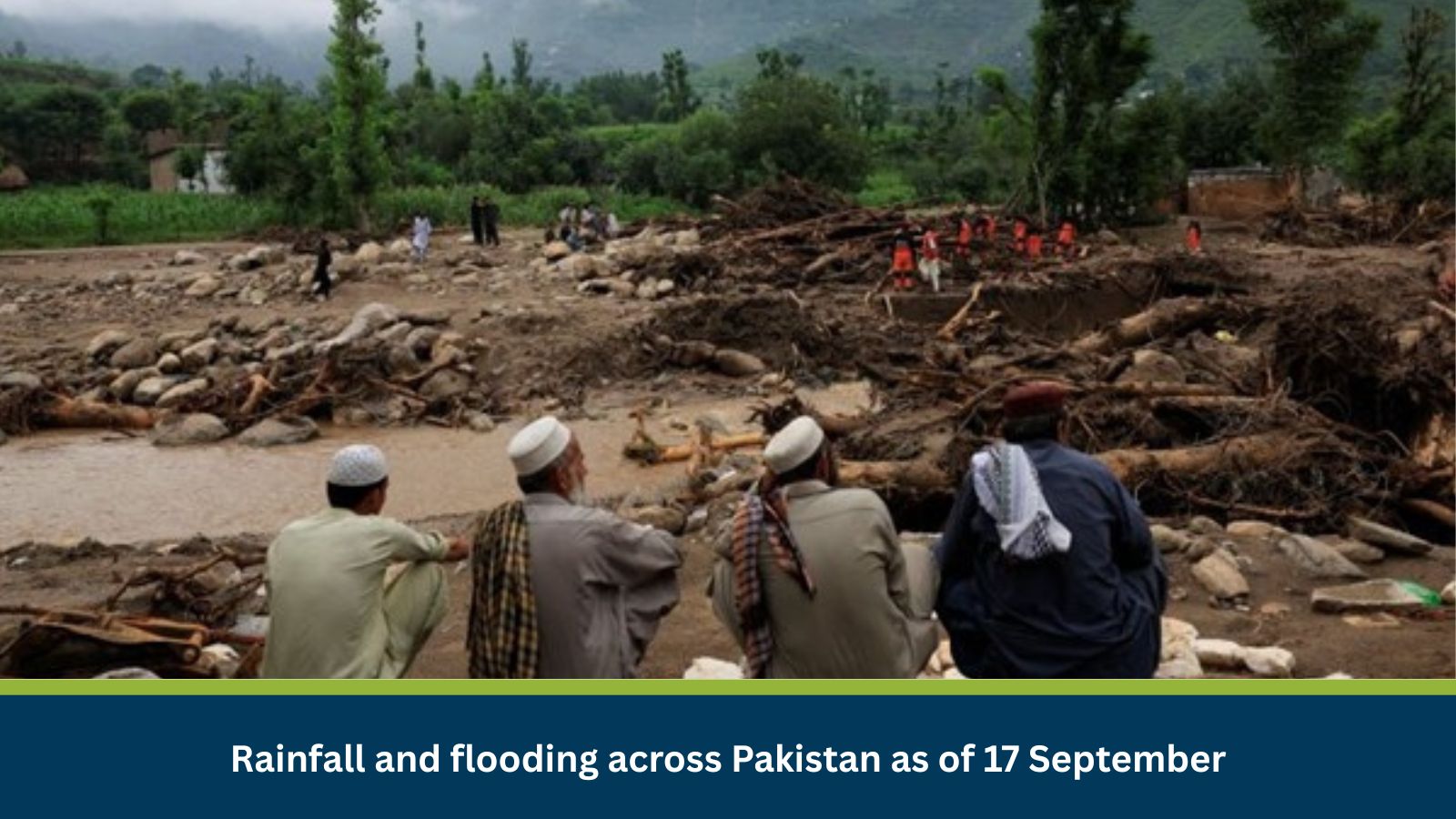What is Risk Analysis in the Context of Natural Disasters
This report assesses the risks of a natural disaster in the form of monsoon flooding. The analysis helps organizations prepare for potential operational challenges related to infrastructure resilience and supply chain stability. It is a critical tool for ensuring employee safety and operational resilience. Based on past incidents, such events consistently cause massive displacement, destruction of property, and widespread disruption.
Executive Summary
- Date of Incident: 17 September 2025
- Location: Islamabad, Peshawar, Punjab, Sindh, Khyber Pakhtunkhwa, Balochistan, Gilgit-Baltistan, Pakistan
- Risk Category: Natural Disasters
- Severity Score: 4/5
- Confidence Level: 90%
A high-severity flood event is currently unfolding in Pakistan, particularly affecting South Punjab, with a specific focus on Jalalpur Pirwala. Based on historical analysis of similar monsoon floods in Pakistan (e.g., 2010, 2022, and numerous events specifically impacting Punjab), this incident is projected to have a likely duration window of the next 1-2 weeks for its peak impact, with secondary effects and recovery efforts extending significantly longer. The severity is justified by consistent historical patterns showing massive displacement and widespread destruction.
Known Hotspots and Sensitive Areas
- High Impact Zones: Jalalpur Pirwala and its surrounding flood-hit regions.
- Medium Impact Zones: Historically vulnerable areas including Bahawalpur, Ahmadpur East, Liaqat Pur, and Zahir Pir, along with areas adjacent to the Chenab and Sutlej rivers. These regions are characterized by dense populations, agricultural land, and critical infrastructure.
Impact on Transportation and Services
The ongoing monsoon floods have led to significant transport disruptions. While specific road names are not provided, widespread road closures are a routine result of inundation and damage. This impedes the movement of goods, leading to supply chain disruptions and bottlenecks. The event also severely affects business operations through agricultural devastation, power outages, and transport blockades.
Recommended Actions
- Prioritize Employee Safety and Communication: Activate an emergency communication protocol for all employees, especially those in affected regions. Coordinate daily welfare checks and provide official advisories on safe routes.
- Secure Assets: Implement immediate asset protection measures by securing critical machinery, inventory, and documents. Relocate high-value equipment to elevated areas and ensure backup power systems are functional.
- Manage Supply Chains: Establish alternative supply chain and logistics routes, leveraging secondary vendors and transport networks. Proactively communicate with suppliers and distributors to anticipate delays and preposition essential buffer stock.
- Maintain Client Communication: Proactively inform all clients and partners about potential service disruptions and revised operational plans. Utilize multiple channels to provide transparent updates.
- Update Plans: Review and update the Business Continuity Plan (BCP) and Flood Emergency Response Plan to incorporate lessons from past events.
Emergency Contacts
- Police: 15
- Fire Department: 1122
- National Disaster Management Authority (NDMA) Pakistan
- Provincial Disaster Management Authority (PDMA) Punjab
Final Thoughts
The baseline scenario anticipates a continued but localized impact over the next week. However, there is a significant risk of escalation if a new spell of rainfall causes renewed surges in river levels, leading to more widespread evacuations and infrastructure damage. A severe escalation could result in catastrophic disruption to regional and national supply chains. Businesses should prepare for the baseline scenario while being mindful of the potential for a severe natural disaster. Early warning systems and preparedness tools are crucial for effective risk analysis and response.
Stay ahead of operational risks with real-time alerts, scenario modeling, and expert advisories with datasurfr’s Predict. Start your 14-day free trial of Datasurfr’s Risk Intelligence Platform today.






